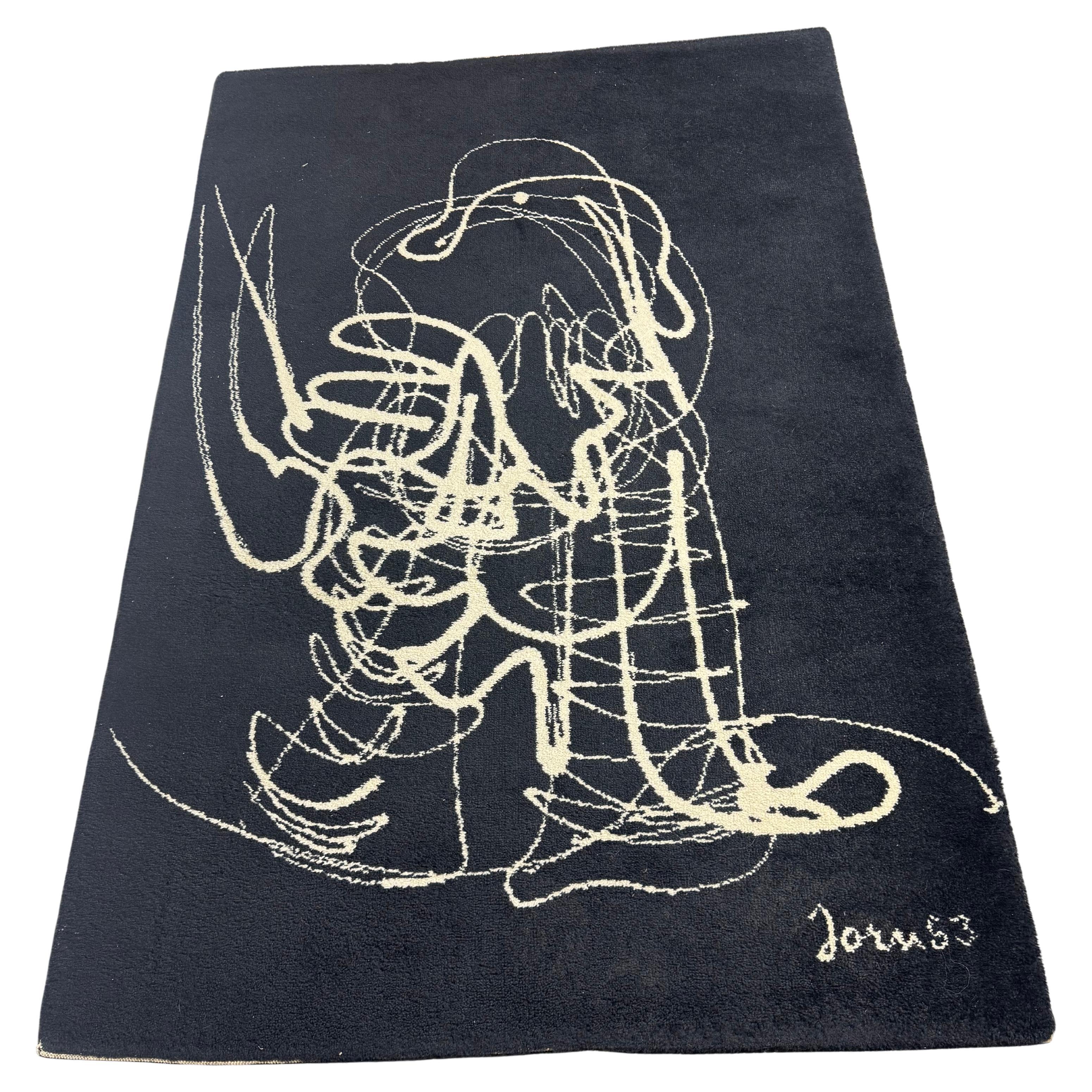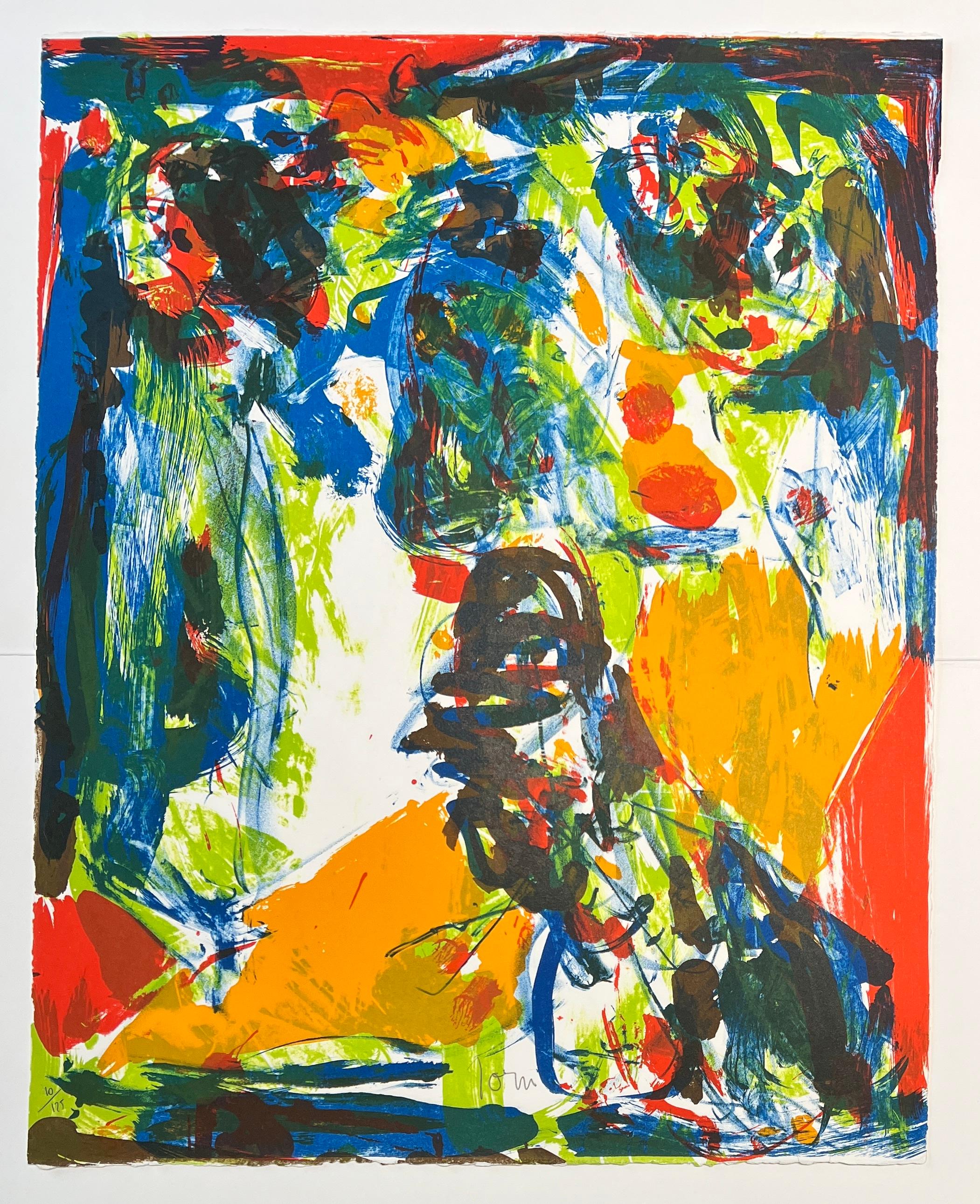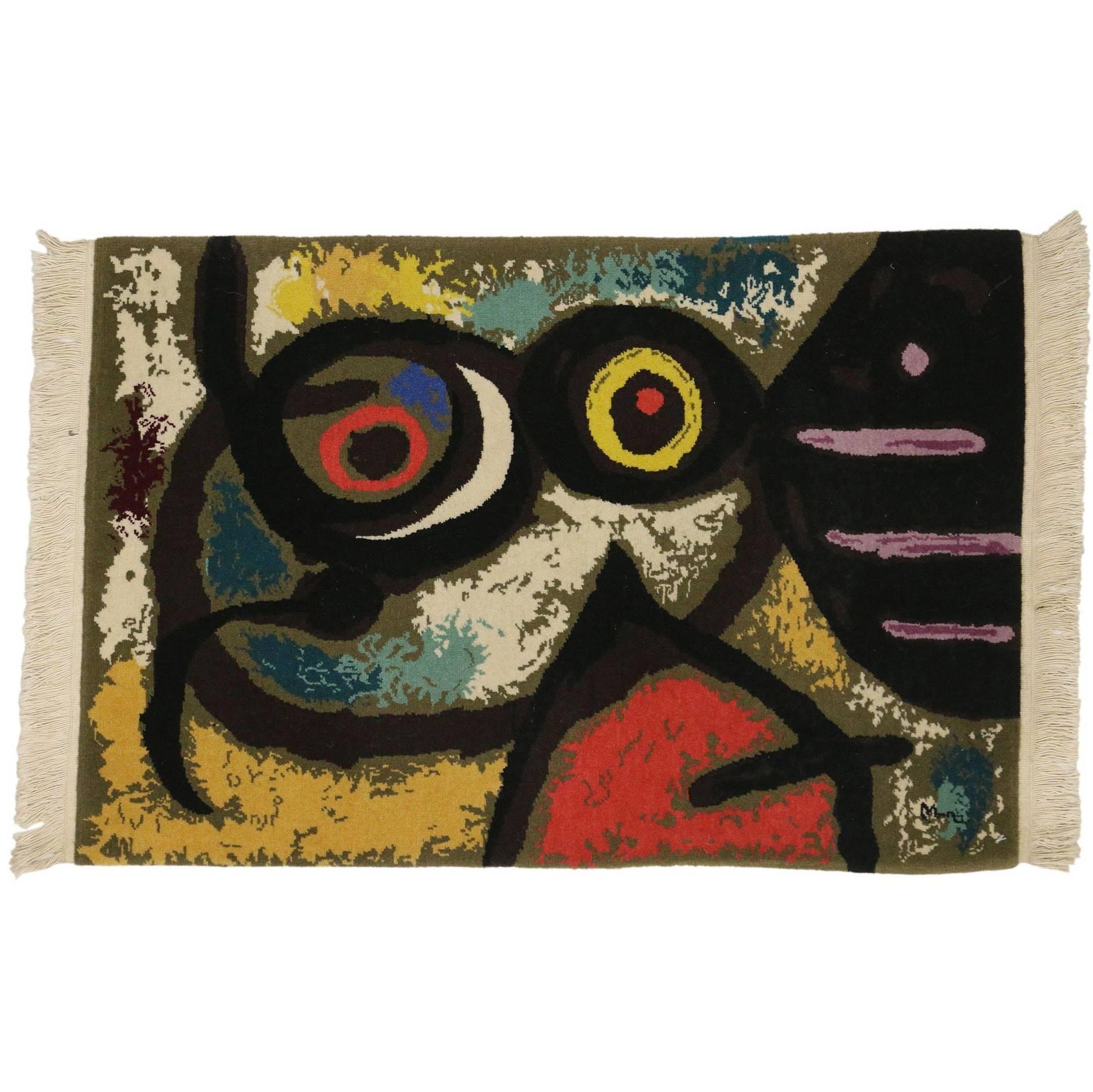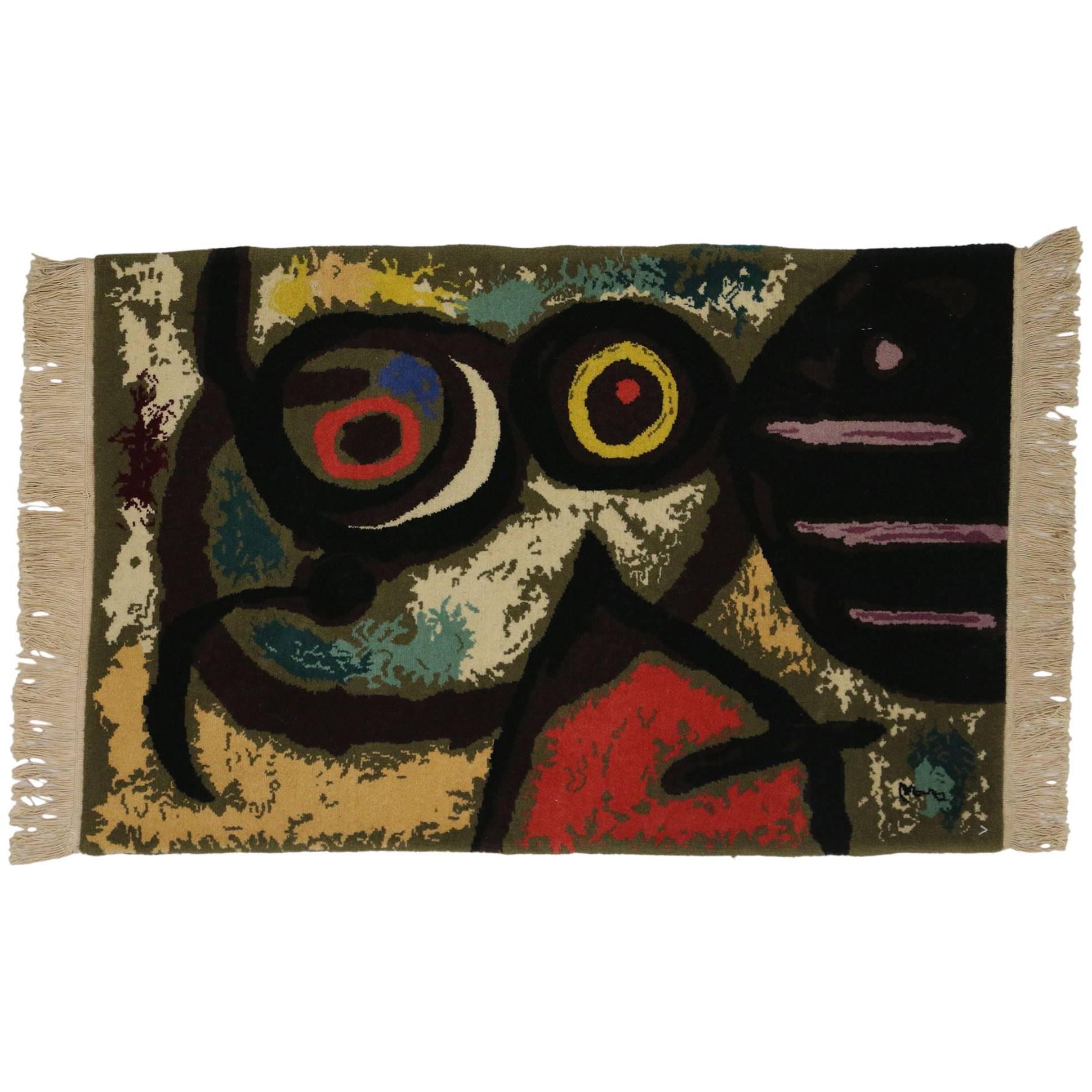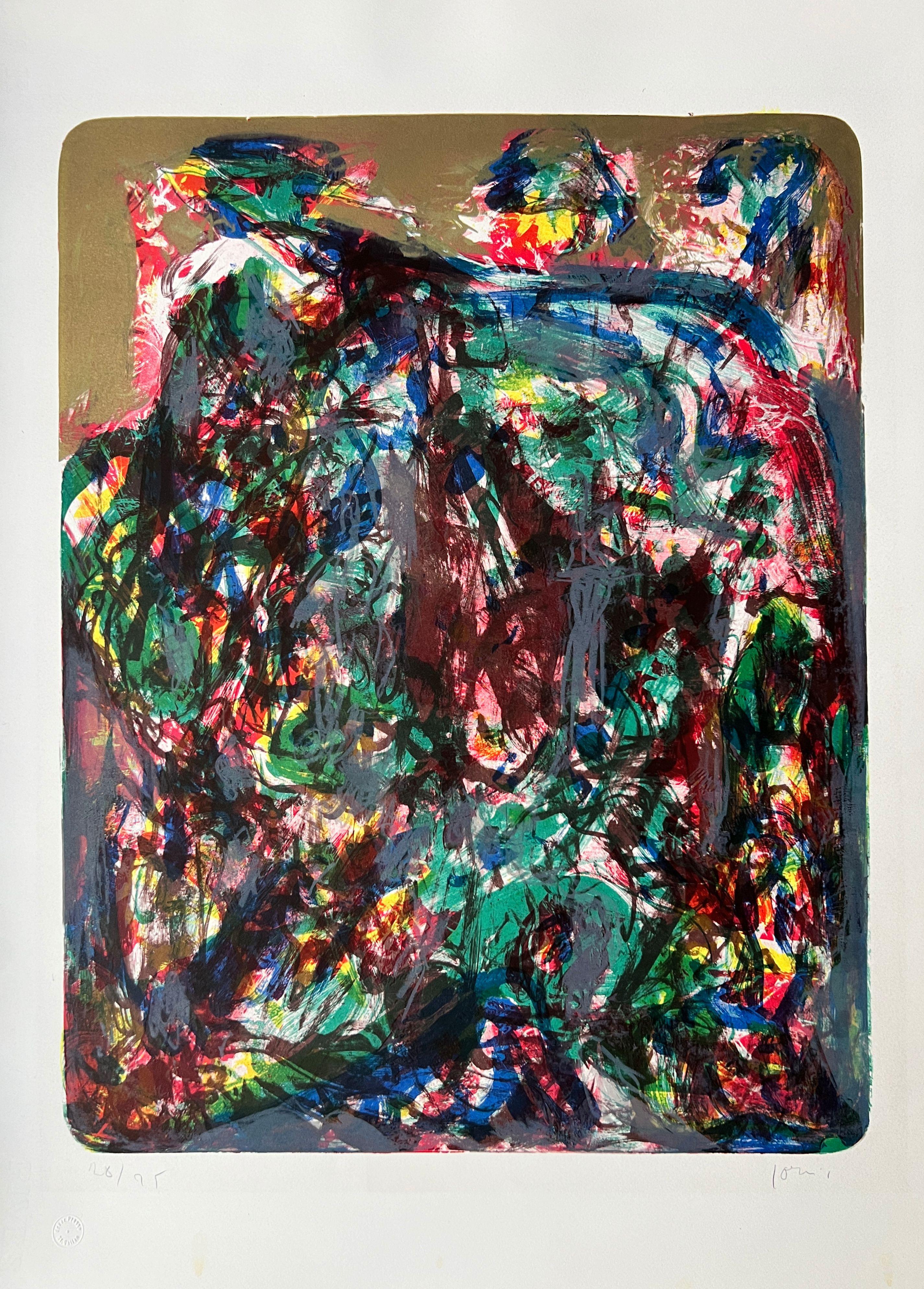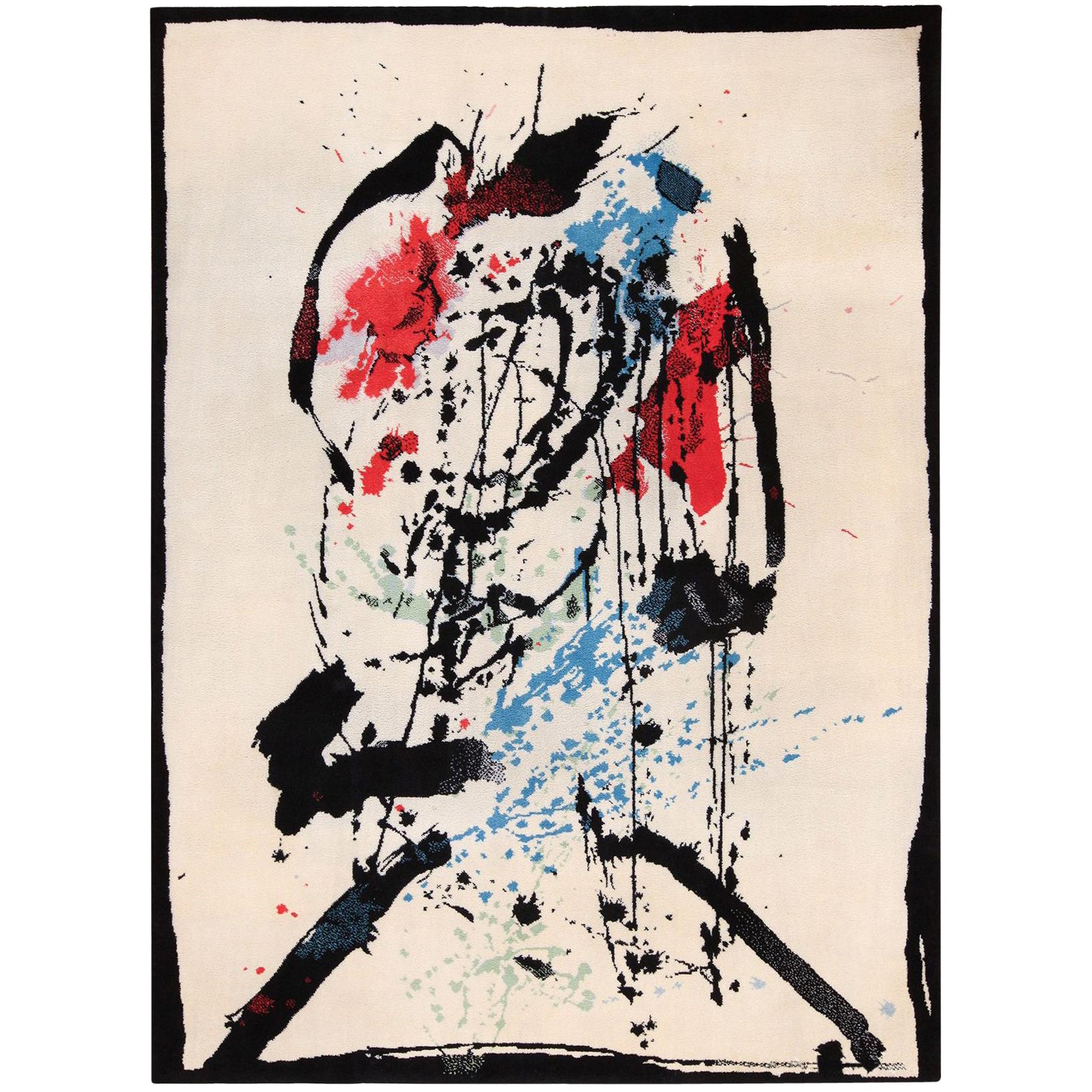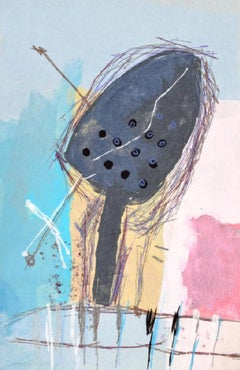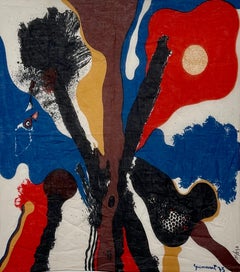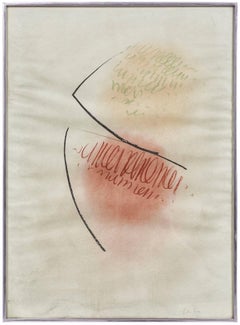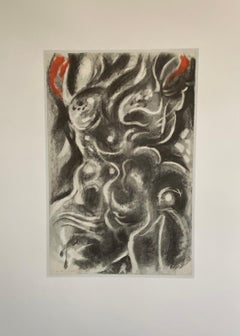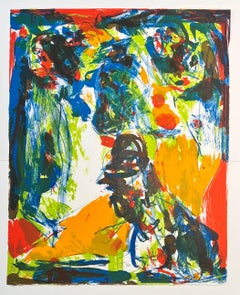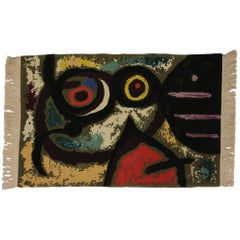Asger Jorn (1914-1973)
Ege Axminster, Denmark. Danish Tapestry Rug Art-Line
Etiquette de l'éditeur Ege Axminster (Danemark) titrée au revers.
Les Emigrants
132 x 98 inches,
Pure New Wool in white, grey, blue and black.
Signed Jorn in the weave, bears maker's label verso
This is a tufted pile wool carpet tapestry not a flat weave like an Aubusson.
Asger Oluf Jorn (3 March 1914 – 1 May 1973) was a Danish painter, sculptor, ceramic artist, and author. He was a founding member of the avant-garde movement COBRA and the Situationist International. He was born in Vejrum, in the northwest corner of Jutland, Denmark, and baptized Asger Oluf Jørgensen.
The largest collection of Jorn's works—including his major work Stalingrad—can be seen in the Museum Jorn, Silkeborg, Denmark. Jorn willed his property and the works of art located inside to the Municipality of Albissola Marina (Savona), so the Italian museum called "Casa Museo Jorn" was created for displaying his works.
In 1929, aged 15, he was diagnosed with tuberculosis, although he made a recovery from it after spending three months on the west coast of Jutland. By the age of 16 he was influenced by N. F. S. Grundtvig, and although he had already started to paint, Asger enrolled in the Vinthers Seminarium, a teacher-training college in Silkeborg where he paid particular attention to a course in 19th century Scandinavian thought. Also at about this time Jorn became the subject of a number of oil paintings by the painter Martin Kaalund-Jørgensen, which encouraged Jorn to try his hand in this medium. When he graduated from college in 1935, the principal wrote a reference for him which said that he had attained "an extraordinary rich personal development and maturity" – especially because of his wide reading in areas outside the topics required for his studies. In 1936 he traveled (on a BSA motorbike he had scraped together enough money to buy) to Paris to become a student of Wassily Kandinsky. However, when he discovered that Kandinsky was having economic difficulties, barely able to sell his own paintings, Jorn decided to join the Fernand Leger' Académie Contemporaine; it was during this period that he turned away from figurative painting and to abstract art. In 1937 he joined Le Corbusier in working on the Pavillon des Temps Nouveaux at the 1937 Paris Exhibition. He returned again to Denmark in the summer of 1937. He again traveled to Paris in the summer of 1938, before returning to Denmark, traveling to Løkken, Silkeborg and Copenhagen. Asger Jorn was a good friend of the Danish art dealer Børge Birch, owner of Galerie Birch, who sold his art as early as the 1930s. Later on Jorn held many group exhibitions and solo exhibitions in different galleries. From 1937 to 1942, he studied at the Royal Danish Academy of Fine Arts in Copenhagen.
The occupation of Denmark by Nazi Germany was a time of deep crisis for Jorn, who had been deeply inculcated with pacifism. The occupation initially sank him into deep depression. He subsequently became active in the communist resistance movement. During the war he also co-founded with the architect Robert Dahlmann Olsen the underground art group, Helhesten or "hell-horse," and was a contributor to its journal. In 1939, he wrote the key theoretical essay, "Intimate Banalities," published in Helhesten, which claimed that the future of art was kitsch and praised amateur landscape paintings as "the best art today." He was also the first person to translate Franz Kafka into Danish.
He traveled again to France where in the autumn of 1948 He helped found COBRA (a European avant-garde art movement), and edited monographs of the Bibliothèque Cobra. COBRA was formed by Karel Appel, Constant, Corneille, Christian Dotremont, Asger Jorn, and Joseph Noiret on 8 November 1948 in the Café Notre-Dame, Paris, with the signing of a manifesto, "La cause était entendue". (Artists included Pierre Alechinsky, Pol Bury, Robert Jacobsen, Bengt Lindström, Jean Messagier) By 1949 Jorn had started a relationship with Matie van Domselaer, the daughter of the composer Jakob van Domselaer. This caused tension in the COBRA group with the Dutch artists boycotting a conference held at Bregnerød later that year. Matie and Jorn were married in 1950 and they had a son Ole and daughter Bodil. The COBRA group dissolved in 1951. He returned, impoverished and seriously ill with tuberculosis, to Silkeborg in 1951 and resumed work in the ceramic field in 1953. The following year he traveled to Albissola Marina in Italy where he became involved with an offshoot of COBRA, the International Movement for an Imaginist Bauhaus. His first American solo exhibition was at the Lefebre Gallery in 1962. After 1966, Jorn continued to produce oil paintings while traveling throughout Europe collecting images with photographer Gerard Franceschi for his vast archive of "10,000 Years of Nordic Folk Art". He traveled extensively, to Cuba, England, and the far east. Jorn traveled to the United States for the only time in 1970, for a gallery opening at Lefebre Gallery. He had earlier asserted that he refused to travel to a country that made visitors sign a statement maintaining that they were not communists.
In 1964, he was awarded a Guggenheim Award including a generous cash prize, by an international jury assembled by Lawrence Alloway. During the course of his artistic career he produced over 2,500 paintings, prints, drawings, ceramics, sculptures, artist's books, collages, décollages, and collaborative tapestries.
He died in Aarhus, Denmark on 1 May 1973.
